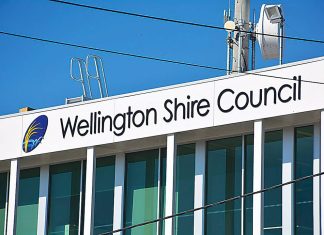LETTER TO THE EDITOR:
I WAS shocked to read of the planned demolition of the former Fulham Post Office, which was previously a hotel.
This building has a history stretching back 146 years, which will be lost with its demolition.
According to your article, VicRoads bought the property mid-2016.
I must commend VicRoads for arranging with Dr Vincent Clarke and Associates, to conduct an examination of the building, and Michelle Negus Cleary, Paul Kucero and Wendy Morrison, who produced, in November 2016, an expensive heritage documentation of the property.
Basically it is a good record, however in the written portion I can see a number of errors.
To conclude that it was built in 1896, because of a brand on a couple of sheets of roofing iron is wrong, because according to the Gippsland Times of October 5, 1872, John McElligott was advertising his Junction Hotel.
John McElligott became the licensee of the Commercial Hotel, Sale, on September 9, 1869, when it was transferred September 11, 1869, from Eleanor Price.
McElligott applied for a publican’s licence for a house on the Sale and Rosedale Rd on August 5, 1871, and would suggest that McElligott had built this house assisted by T Blacker, because on January 27, 1872, Blacker was suing McElligott for nine pound nine, for work and labour done.
Blacker complained that he had built a weatherboard house on the Rosedale Rd for the defendant and was still owed that amount.
On page five, the compiler’s directions are incorrect by stating that when the Rosedale Road Board was first formed it stretched from “Traralgon in the east to Sale in the west”.
Actually, it stretched from the Morwell River in the west to the entrance of the lakes to the sea south side of the lakes.
They quoted from my book and even spelt my name wrong.
Strzelecki and Angus McMillan are named as the discoverers of Gippsland in separate expeditions around in 1840.
In actuality, McMillan preceded Strzelecki.
On page six, Archibald McIntosh, a Scotsman and engineer by trade, is named as the first European to settle in the Sale district, establishing a blacksmith shop about eight kilometres, or five miles west of the study area.
A post office opened on the Latrobe in 1848 named Flooding Creek.
As far as I know, the Flooding Creek post office was in Sale.
They stated that Rosedale is situated in the middle of the Snake Ridge Run, named after the western section of the run.
The Rosedale run is on the north side of the Latrobe, stretching as far as Toongabbie.
It was never part of Snake Ridge.
On page eight, they have endeavoured to include a history of the Fulham run, stating that “retired Snr. Captain RH Jones (in another place he is JH Jones) became the owner on October 6, 1853, and that Captain Jones built the home that is still extant.
This man’s name was Captain John Williams Jones.
John William Jones was married in Hobart on October 15, 1849, to 25-year-old Mary Anne James Jones was 24, therefore he could hardly have been retired.
The compilers record that ultimately Jones forfeited the property on December 9, 1870.
This is incorrect, Jones had taken his own life in 1862 and his widow, Mary Anne, struggled against mortgages for the next 8 years finally being sold at auction on that date by the sheriff.
The compilers debate about whether the Fulham Post Office was on the northern boundary of the Kilmany run or the southern edge of the Fulham run, and even suggest that the present day Fulham Correctional Centre build in 1989 was part of the Fulham run (this date is obviously 110 years too early).
The Junction Hotel saw the construction of the railway line from 1874 to the duplication of the highway from Fulham to Sale completed in 2016.
It is a pity the building cannot be preserved, or relocated, but it’s too big a task for small volunteer organisations.
I must thank VicRoads for its efforts in preserving its history.






